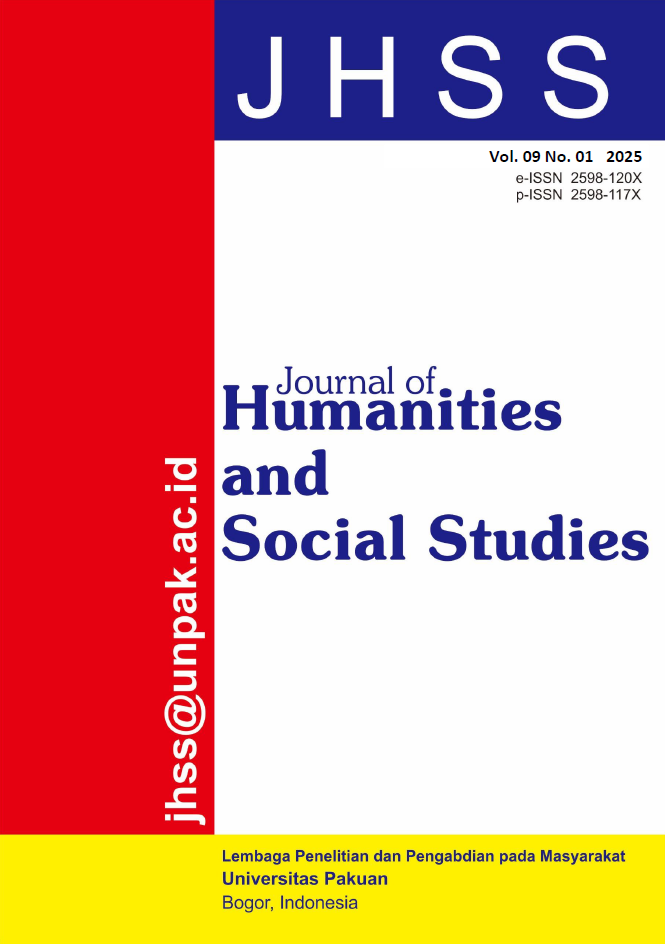The Implementation Of Pelayanan Administrasi Terpadu Kecamatan (Paten) In Bekasi Selatan Sub-District
DOI:
https://doi.org/10.33751/jhss.v9i1.48Abstract
This study aims to analyze the implementation of the Integrated District Administration Service (Pelayanan Administrasi Terpadu Kecamatan or PATEN) policy in South Bekasi District using George C. Edward III’s policy implementation model. The research employed a qualitative method with data collection techniques including participant observation, structured and semi-structured interviews, and documentation. The study found that the four key dimensions of policy implementation—communication, resources, disposition, and bureaucratic structure—were not optimally integrated in the PATEN implementation at South Bekasi District. Communication barriers were evident in the poor dissemination of information to the community, limited public understanding of the PATEN policy, and inconsistencies in service procedures. Although the district has adopted digital systems such as E-Open and OSS to support public service delivery, some staff members still lack the necessary competencies to operate digital platforms effectively. Furthermore, the attitude of policy implementers was found to be problematic, as some officers tended to deflect responsibility, were not proactive in problem-solving, and were suspected of engaging in unofficial payment practices. From the bureaucratic structure perspective, the delegation of non-licensing services to the village level has disrupted the principle of one-stop service and created fragmented procedures that potentially open up opportunities for administrative discretion and service inequality. This study concludes that the PATEN policy implementation in South Bekasi District is still suboptimal and faces significant challenges in communication, human resources, service attitudes, and bureaucratic coordination, which may ultimately affect the public’s trust in government services.
References
Lipsky, M. (2010). Street-level bureaucracy: Dilemmas of the individual in public service. New York: Russell Sage.
Maulidiah, S. (2014). Pelayanan publik (Pelayanan Terpadu Administrasi Kecamatan). Bandung: CV. Indra Prahasta.
Sugiyono. (2009). Metode penelitian pendidikan: Pendekatan kuantitatif, kualitatif, dan R&D. Bandung: Alfabeta.
Tjilen, A. P. (2019). Konsep, teori, dan teknik analisis implementasi kebijakan publik. Bandung: Nusamedia.
Tjiptono, F. (2012). Service management: Mewujudkan layanan prima. Yogyakarta: C.V. Andi Offset.
Widodo, J. (2010). Analisis kebijakan publik. Malang: Bayu Media.
Putra, F., & Nangameka, T. (2018). Implementasi kebijakan pelayanan administrasi terpadu kecamatan (PATEN) di Kecamatan Jatinangor Kabupaten Sumedang Provinsi Jawa Barat. TRANSFORMASI: Jurnal Manajemen Pemerintahan, 10(1), 41–58.
Sitorus, M. (2019). Pengaruh communication, resources, disposition, dan bureaucratic structure terhadap implementasi kebijakan pendidikan (Studi kasus pembentukan Dewan Pendidikan Kabupaten Tobasamosir). Jurnal Ilmu Administrasi: Media Pengembangan Ilmu Dan Praktek Administrasi, 4(1), 06.
Nainggolan, R. (2017). Implementasi Program Keluarga Harapan (PKH) di Kecamatan Sambul Kabupaten Dairi. Disertasi, Universitas Medan Area.
Saputra, A. (2024). Implementasi kebijakan pelayanan administrasi terpadu kecamatan (PATEN) di Kecamatan Sape Kabupaten Bima. Tesis, Universitas Muhammadiyah Makassa
Downloads
Published
How to Cite
Issue
Section
License
Copyright (c) 2025 JHSS (JOURNAL OF HUMANITIES AND SOCIAL STUDIES)

This work is licensed under a Creative Commons Attribution-NonCommercial-ShareAlike 4.0 International License.













